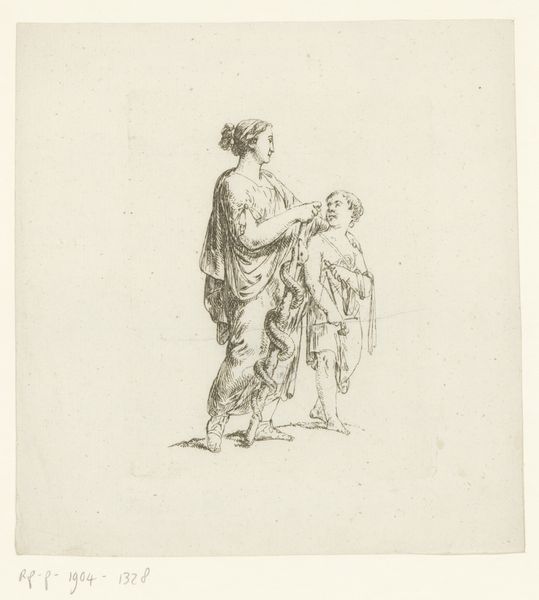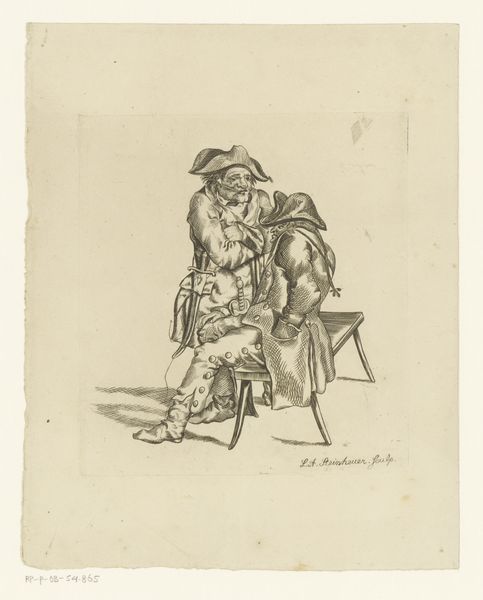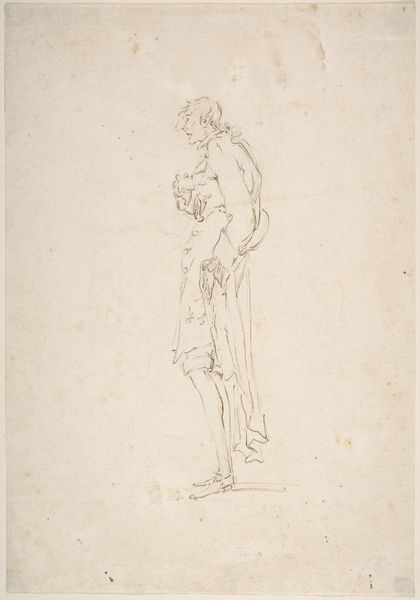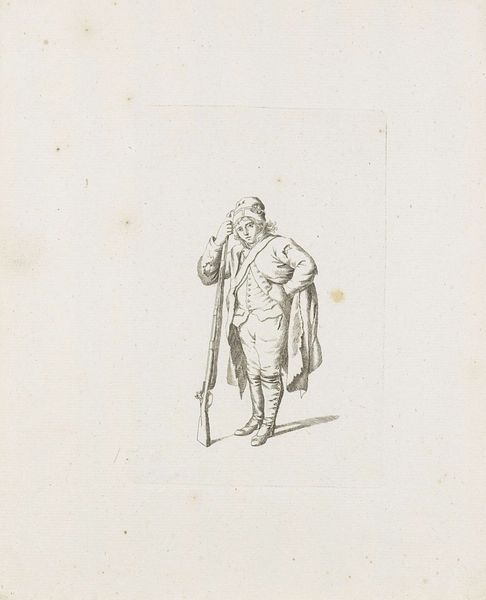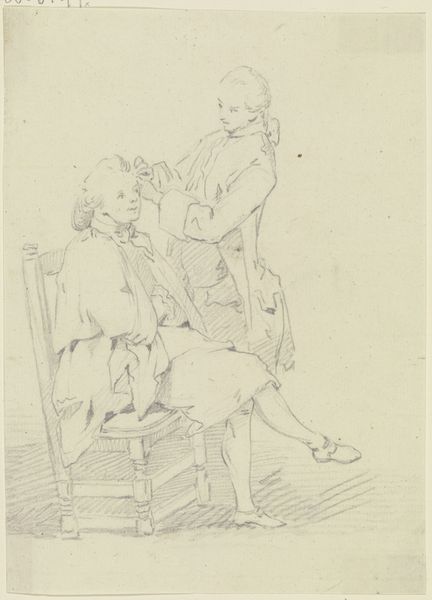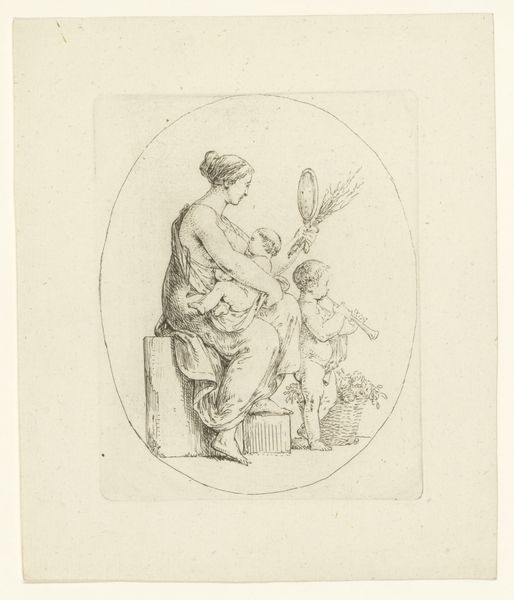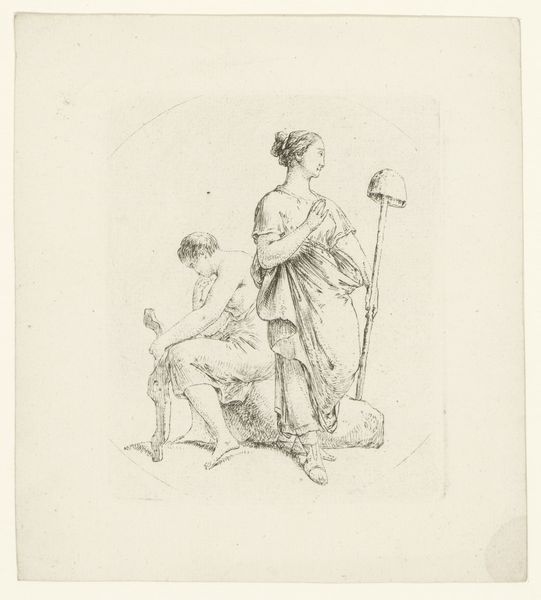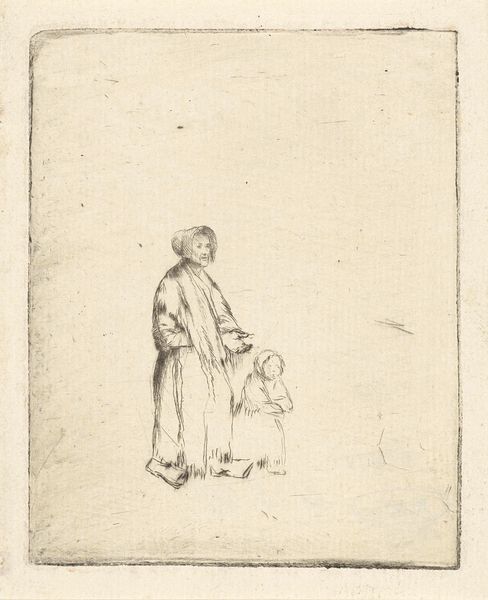
drawing, pencil
#
portrait
#
drawing
#
neoclacissism
#
allegory
#
figuration
#
pencil
#
line
Dimensions: height 138 mm, width 113 mm
Copyright: Rijks Museum: Open Domain
Editor: This drawing, "Allegory of Love" by Christian Bernhard Rode, created in 1788, strikes me with its quiet intimacy. The line work is so delicate. What do you see in this piece, especially considering its historical context? Curator: It’s interesting that you pick up on intimacy, because what I see is a carefully constructed image meant to project particular societal values. The neoclassical style, popular during that time, draws heavily from classical antiquity, idealizing motherhood and familial bonds. But think about this idealized form versus the reality for women in the late 18th century. Editor: You mean like, who actually got to experience that ideal? Curator: Precisely! How accessible was this vision of domestic bliss? Neoclassical art often served as propaganda, reinforcing class structures and gender roles. The "Allegory of Love," on the surface, appears sentimental and universal. However, it also suggests a narrative where a woman’s primary role is centered around motherhood and the domestic sphere, while, particularly within privileged social circles, determining factors for a women's existence might have been property ownership or social alliances between influential families. The pencil drawing medium lends it a deceptive softness, but beneath that softness is a fairly rigid framework. What kind of woman is excluded from this vision of "love"? Editor: So it's not just about love, but about power, and who gets to define it? Curator: Exactly! Art doesn't exist in a vacuum. It's a product of its time, reflecting and reinforcing specific ideologies. Looking at art critically means questioning those ideologies, recognizing who is included and, crucially, who is excluded. Editor: That’s a perspective shift. I’ll never see Neoclassical art the same way. Thanks! Curator: And hopefully, it will incite you to see art differently as you continue exploring.
Comments
No comments
Be the first to comment and join the conversation on the ultimate creative platform.


